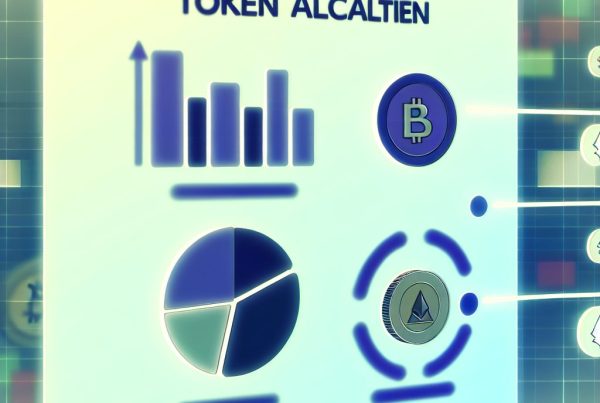What Is Token Whitelisting?
In the rapidly evolving world of cryptocurrency, token whitelisting has emerged as a crucial mechanism for ensuring security and compliance within blockchain projects. This process plays a significant role in protecting investors and maintaining the integrity of the crypto ecosystem. In this comprehensive guide, we will delve into the intricacies of token whitelisting, its importance, how it works, and its implications for both investors and developers.
Understanding Token Whitelisting
Token whitelisting refers to the practice of creating a list of approved participants who are allowed to engage in specific activities related to a cryptocurrency project. This can include participating in token sales, accessing certain features of a platform, or trading tokens on exchanges. The primary goal of whitelisting is to enhance security and ensure that only vetted individuals or entities can interact with a project.
Whitelisting is particularly relevant in the context of Initial Coin Offerings (ICOs) and token sales, where projects often seek to raise funds by selling tokens to investors. By implementing a whitelist, project teams can mitigate risks associated with fraud, money laundering, and regulatory non-compliance.
The Importance of Token Whitelisting
Token whitelisting serves several critical functions in the cryptocurrency landscape:
- Security: By restricting access to a select group of participants, projects can reduce the risk of malicious actors attempting to exploit vulnerabilities.
- Regulatory Compliance: Many jurisdictions have strict regulations regarding securities and fundraising. Whitelisting helps projects comply with these regulations by ensuring that only eligible investors participate.
- Investor Protection: Whitelisting can help protect investors from scams and fraudulent projects by ensuring that only legitimate participants are involved.
- Community Building: By creating a whitelist, projects can foster a sense of exclusivity and community among early supporters, which can enhance loyalty and engagement.
How Token Whitelisting Works
The process of token whitelisting typically involves several key steps:
1. Application Process
Interested participants must submit an application to be considered for the whitelist. This application often requires personal information, such as:

- Name
- Email address
- Wallet address
- Proof of identity (in some cases)
2. Verification
Once applications are submitted, the project team reviews each application to verify the identity and eligibility of the applicants. This may involve background checks and compliance with Know Your Customer (KYC) regulations.
3. Approval and Notification
Approved participants are then added to the whitelist and notified via email or through the project’s official channels. This notification typically includes details about the token sale, such as dates, amounts, and instructions for participation.
4. Participation
Whitelisted participants can then engage in the token sale or access specific features of the project. This may include purchasing tokens at a discounted rate or gaining early access to platform functionalities.
Types of Token Whitelisting
Token whitelisting can take various forms, depending on the project’s goals and regulatory requirements. Here are some common types:
1. ICO Whitelisting
In the context of Initial Coin Offerings, whitelisting is often used to ensure that only approved investors can participate in the token sale. This helps projects comply with securities regulations and protects investors from potential scams.
2. Exchange Whitelisting
Some cryptocurrency exchanges require projects to implement a whitelist for users who wish to trade specific tokens. This can help prevent market manipulation and ensure that only verified users can access certain trading pairs.
3. Platform Whitelisting
Decentralized applications (dApps) may also use whitelisting to control access to their platforms. This can include limiting access to certain features or functionalities based on user verification.
Real-World Applications of Token Whitelisting
Token whitelisting has been successfully implemented in various projects across the cryptocurrency landscape. Here are a few notable examples:
1. Binance Launchpad
Binance, one of the largest cryptocurrency exchanges, utilizes a whitelisting process for its Launchpad platform. Projects seeking to raise funds through token sales on Binance must undergo a rigorous vetting process, ensuring that only legitimate projects are presented to investors. This has helped Binance maintain its reputation as a trusted platform for token sales.
2. Polkadot
Polkadot, a multi-chain blockchain platform, employs a whitelisting mechanism for its parachain auctions. Only projects that meet specific criteria can participate in these auctions, ensuring that only high-quality projects are granted access to the Polkadot ecosystem.
3. Ethereum-based Projects
Many Ethereum-based projects implement whitelisting during their ICOs to comply with regulatory requirements. For instance, projects like Filecoin and 0x have utilized whitelisting to ensure that only accredited investors can participate in their token sales, thereby reducing legal risks.
Challenges and Considerations
While token whitelisting offers numerous benefits, it also presents challenges that projects must navigate:
1. User Friction
The whitelisting process can create barriers for potential investors, leading to frustration and lost opportunities. Projects must balance security with accessibility to ensure a smooth user experience.
2. Regulatory Compliance
As regulations surrounding cryptocurrencies continue to evolve, projects must stay informed about the legal implications of their whitelisting processes. Failure to comply with regulations can result in severe penalties.
3. Security Risks
While whitelisting enhances security, it is not foolproof. Projects must implement robust security measures to protect user data and prevent unauthorized access to their platforms.
FAQs About Token Whitelisting
What is the purpose of token whitelisting?
The primary purpose of token whitelisting is to enhance security, ensure regulatory compliance, and protect investors by allowing only vetted participants to engage with a cryptocurrency project.
How do I get on a token whitelist?
To get on a token whitelist, you typically need to submit an application that includes personal information and undergo a verification process conducted by the project team.
Are all cryptocurrency projects required to use whitelisting?
No, not all cryptocurrency projects are required to use whitelisting. However, many choose to implement it to enhance security and comply with regulatory requirements.
Can I participate in a token sale without being whitelisted?
In most cases, participation in a token sale requires being on the whitelist. However, some projects may allow public participation without whitelisting, depending on their specific policies.
What happens if I am not approved for the whitelist?
If you are not approved for the whitelist, you will not be able to participate in the token sale or access certain features of the project. It is essential to ensure that your application meets the project’s criteria.
Conclusion
Token whitelisting is a vital component of the cryptocurrency ecosystem, providing a framework for security, compliance, and investor protection. As the industry continues to mature, the importance of whitelisting will only grow, helping to foster a safer and more trustworthy environment for all participants.
For those looking to stay informed about the latest developments in the crypto space, platforms like Bitrabo offer valuable insights and price tracking tools. Additionally, you can follow me on social media for more updates: X, Instagram, and Threads.
Disclaimer: The information provided in this article is for informational purposes only and should not be considered financial advice. Always conduct your own research before investing in cryptocurrencies.
The Crypto Watchlist of the Week 🔎
Subscribe to receive expert-curated projects with real potential—plus trends, risks, and insights that matter. Get handpicked crypto projects, deep analysis & market updates delivered to you.


